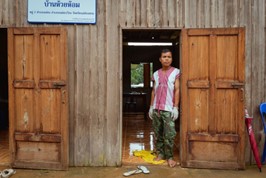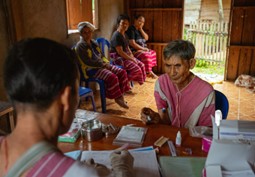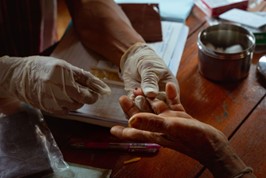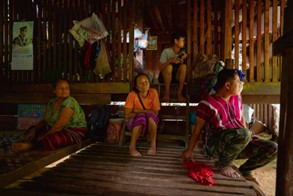In the mountainous region of Mae Hong Son in northern Thailand, ethnic community engagement plays a critical role in the fight against malaria, a disease caused by parasites transmitted through mosquito bites. Huai Hom Village is at the heart of the Mekong Malaria Elimination Programme (MME), a World Health Organization-led initiative started in 2017 aimed at eradicating malaria by 2030 from six countries in the Mekong subregion. A key component of this programme is the Integrated Drug Efficacy Surveillance (iDES) system. This system monitors how well patients respond to malaria treatments, identifies potential drug resistance, and helps health authorities make necessary adjustments to treatment guidelines, ensuring the effectiveness of malaria control and prevention efforts.
Community participation, especially in remote villages like Huai Hom, is vital. The engagement of local communities, as seen with Village Health Volunteers (VHV) like Panaeloi Chuenpasom, underscores the profound impact of grassroots involvement in global health initiatives. VHVs are local residents trained to provide basic health services and education, acting as the first point of contact between their communities and the formal health system.
Despite a decline in malaria cases in Thailand, the disease still disproportionately affects rural populations who face poverty and limited education. Vulnerable groups, including refugees, migrants, and indigenous peoples, often endure conditions conducive to malaria due to systemic barriers linked to gender, ethnicity, age, and socioeconomic status. The World Health Organization advocates for overcoming these challenges through universal health coverage, primary healthcare, and community engagement. Huai Hom Village exemplifies effective local action, where initiatives led by VHVs bridge the gap between traditional practices and modern healthcare, demonstrating the crucial role of grassroots efforts in malaria elimination.
Bridging Healthcare in Huai Hom Village:

Panaeloi, a devoted VHV, stands in front of the Huai Hom Village health center, a place where he diligently works to support his community's health. © WHO 2023
Panaeloi Chuenpasom, a Karen VHV in Huai Hom village, stands as a key figure in the local health initiative. He navigates the challenges of a resource-scarce community where healthcare often takes a backseat to economic realities. He says his work can be challenging because the majority of those living in his village are poor and have little additional funds that can be put towards their health needs. People here often live hand to mouth and so tend to avoid going to the hospital as it entails time, effort, and expenses. Yet, his dedication extends far beyond malaria services. Panaeloi acts as a bridge, coordinating with village focal points to share information and strategies, ensuring comprehensive healthcare support for his community.
Blending Tradition with Modern Healthcare:

Panaeloi inputs data into the health system as a rice farmer from the local Karen community seeks medical assistance at the health center. © WHO 2023
In an instance of bridging traditional and modern healthcare, Panaeloi inputs data into the health system as Tumdhae Wongpanaprasit, an 88-year-old rice farmer and a typical resident of Huai Hom village, seeks medical assistance. Tumdhae, who contracted malaria 11 days ago, usually relies on traditional medicine and sometimes collects plants from the forest. His decision to seek help from Panaeloi highlights the growing trust in VHVs and underscores the crucial role of community health workers in integrating traditional beliefs with contemporary healthcare.
Integrated Approach in Treatment and Surveillance

Panaeloi collects blood from the finger of a patient to test for malaria © WHO 2023
Panaeloi collects blood samples using a finger-prick method to test patients for malaria. If the test is positive, he prescribes the latest treatment schemes, including drugs containing artemisinin, and records the patients in the iDES system to monitor drug effectiveness and prevent resistance. Patients undergo regular blood tests to ensure the treatment works, with follow-ups on the 42nd day for P. falciparum or the 60th day for P. vivax to confirm cure. This comprehensive care approach and deep understanding of the community are fundamental to the success of the health initiative in Huai Hom village.
Community Commitment: Panaeloi's Impact in Malaria Elimination

Panaeloi sits among a Karen family in their home in Huai Hom village, exemplifying the deep bond and trust shared between health workers and the Karen community they serve.© WHO 2023
In Mae Hong Son, the success of the Mekong Malaria Elimination Programme is deeply intertwined with the dedication of VHV like Panaeloi. Their efforts in customizing malaria strategies to local needs significantly boost the programme's effectiveness. Panaeloi's deep commitment to his community's health mirrors the critical role these VHV play in the battle against malaria.
“This role makes me proud to serve and represent my people, I also want for my family to be happy and healthy which is why I dedicate my time to volunteering.” says Panaeloi, highlighting his deep commitment to his community's health and well-being.